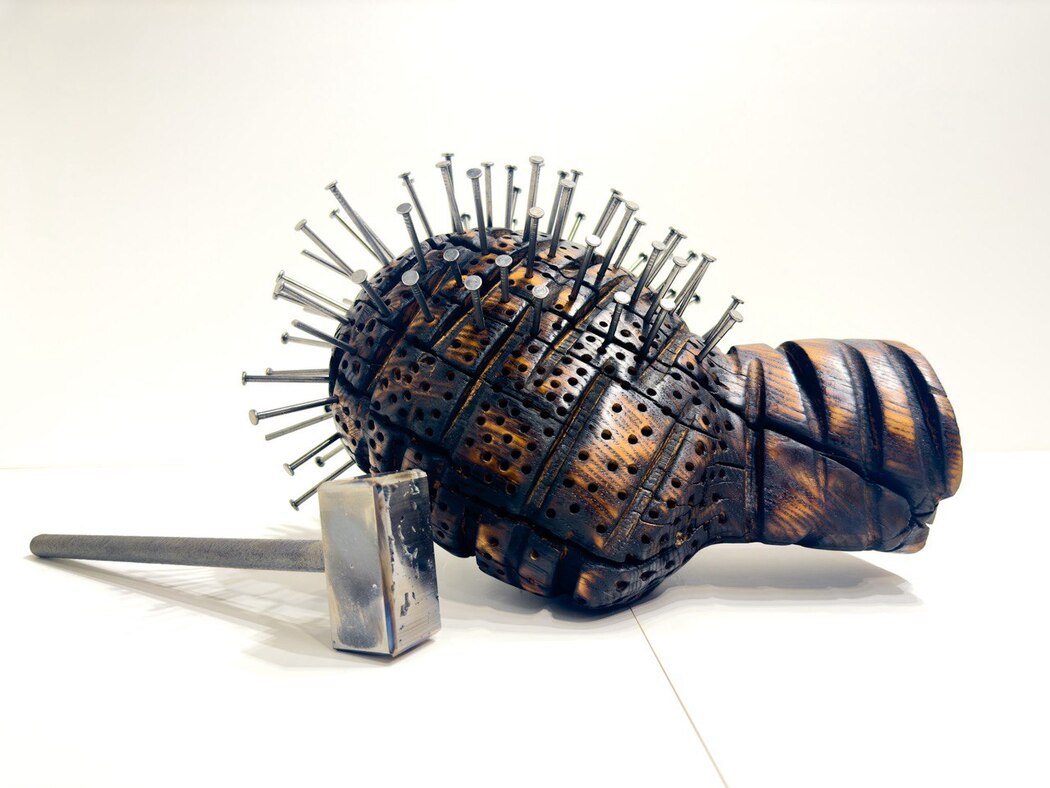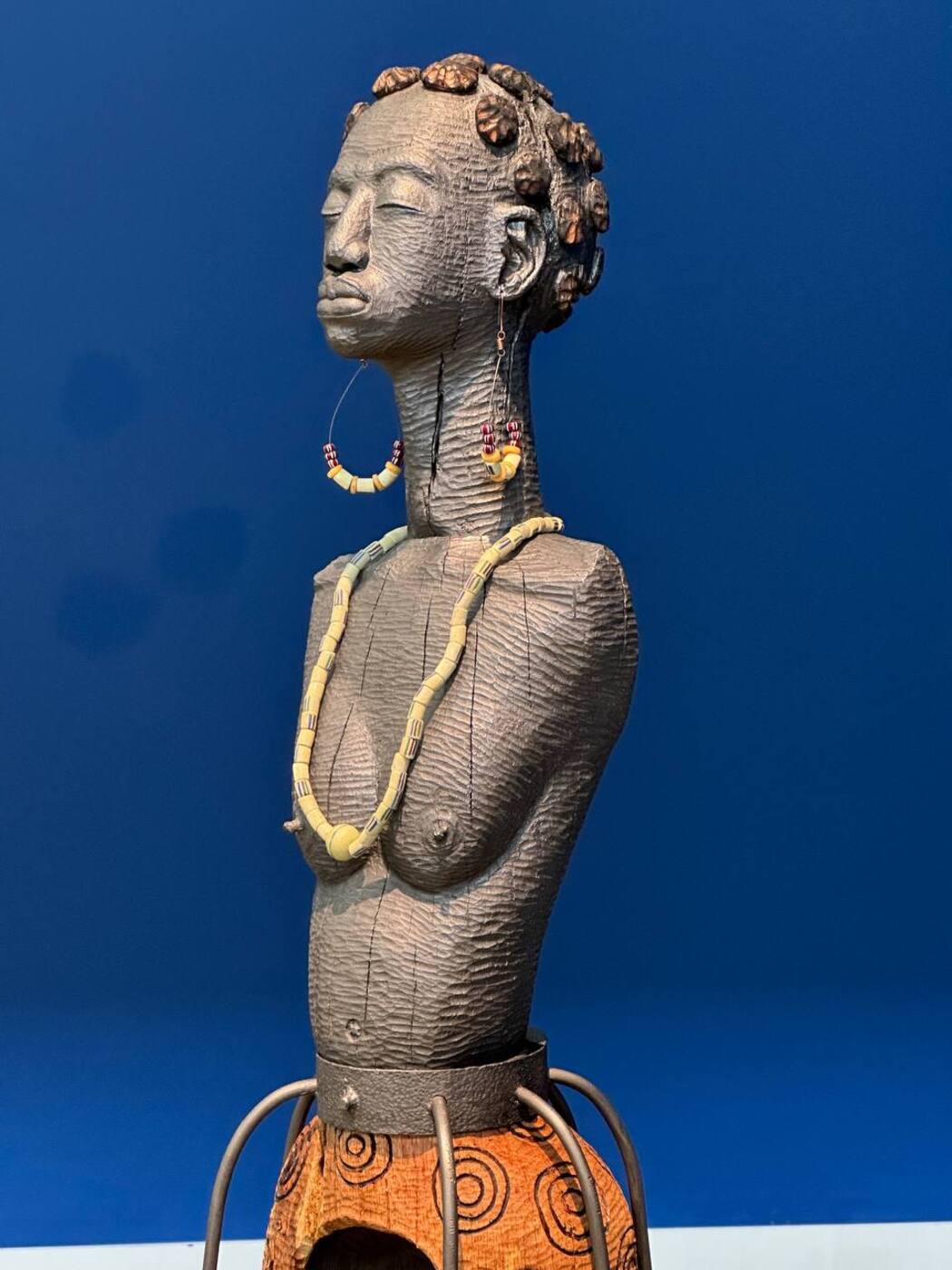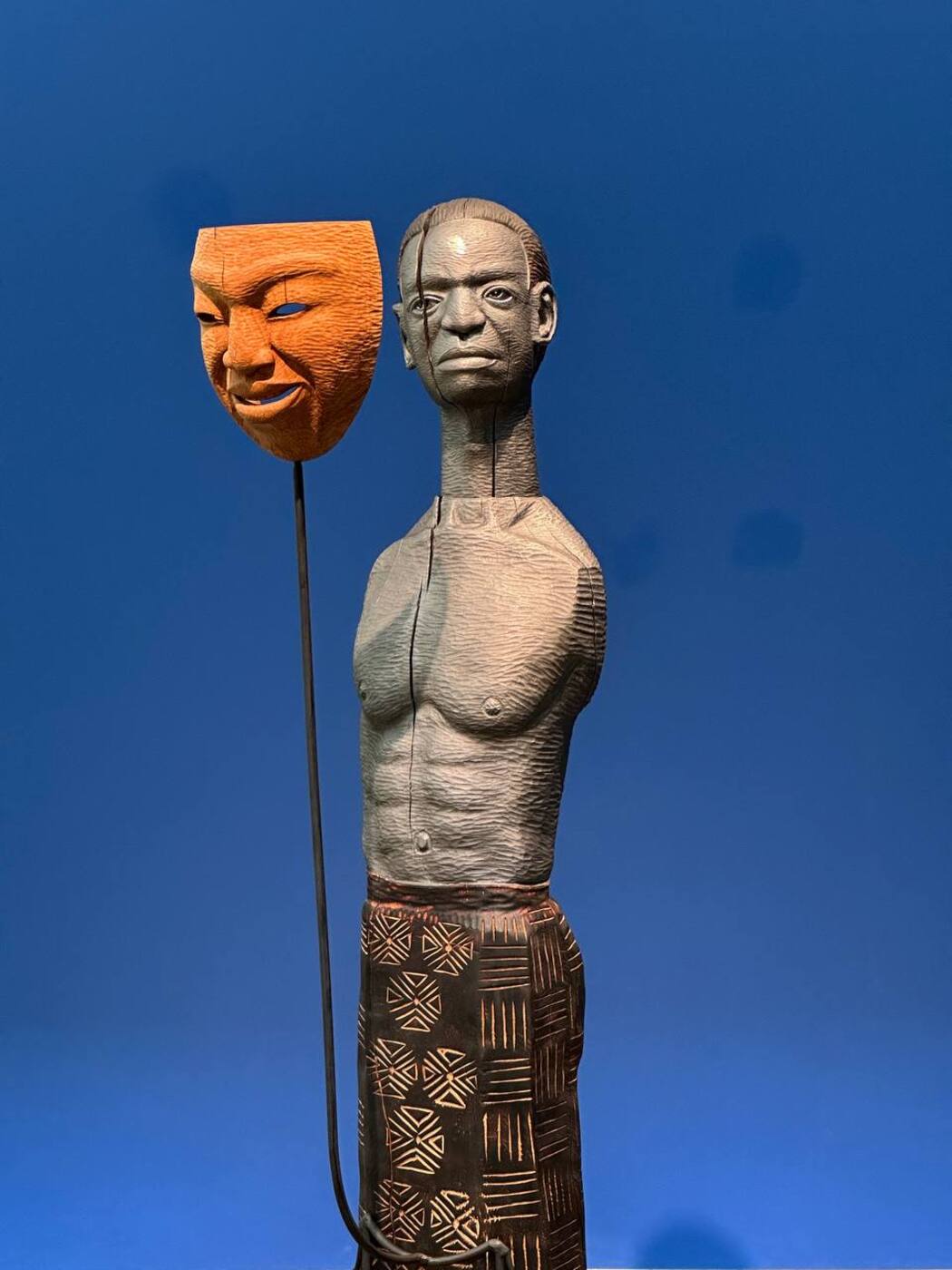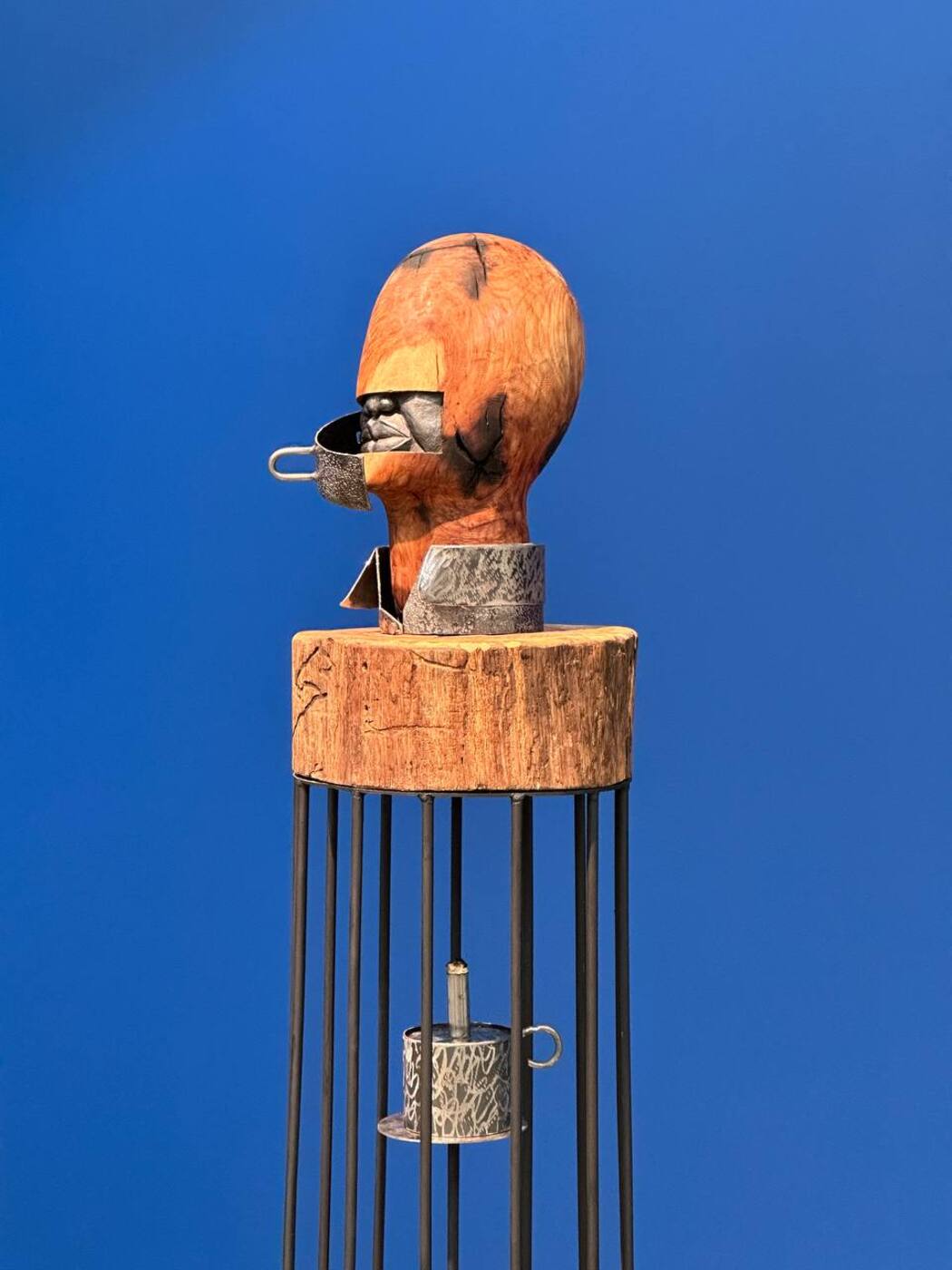Reginald Ayivor
Year of birth: 1993.
Where do you live: Arizona.
Your education: Currently pursuing an MFA at Arizona State University; previously earned an MA in Studio Art (Sculpture) from Eastern Illinois University and a BTech in Sculpture from Takoradi Technical University, Ghana.
Describe your art in three words: Symbolic, Evocative, Transformative.
Your discipline: Sculpture.
Instagram
 Reginald Ayivor | Scars | 2023
Reginald Ayivor | Scars | 2023
Can you describe how your Ghanaian heritage influences your sculptural practice?
My Ghanaian heritage is deeply woven into my practice. Growing up, I was surrounded by traditional crafts, oral histories, and ceremonial objects, which allowed me to develop an early appreciation for the symbolic power of form and material. These cultural influences inform my aesthetic choices and thematic direction, whether in the motifs I explore, the use of indigenous materials like beads, or the storytelling that runs through each piece. My sculptures are a contemporary continuation of that heritage, engaging with memory, identity, and the richness of African traditions.
Many of your sculptures incorporate both wood and metal. What does the combination of these materials represent for you?
My fusion of wood and metal speaks to the dualities I often navigate, tradition and modernity, softness and hardness, organic and industrial. Wood connects me to the earth and ancestral practices, while metal introduces a raw, enduring strength. Together, they mirror the layered nature of identity and experience. The process of merging these materials is also a metaphor for adaptation, resilience, and transformation, central themes in my life and practice.
 Reginald Ayivor | Aku | 2024
Reginald Ayivor | Aku | 2024
Your works often include cage-like structures, masks, and vessels. What symbolic meanings do these elements carry in your art?
These elements are potent symbols. The Cage-like structures speak to confinement and protection, often reflecting internal struggles or societal constraints. The Masks represent layered identities, how we present ourselves versus what lies beneath. The Vessels (Lanterns), on the other hand, symbolize the spirit within as light to the entire being. Each form carries emotional and cultural weight, allowing viewers to project their own meanings while connecting with mine.
How do personal experiences and memory shape the narratives you convey through your sculptures?
My work is deeply personal. Each sculpture becomes a physical manifestation of a memory, an emotion, or a lived experience. Whether I am processing moments of displacement, belonging, or cultural pride, the act of carving and welding becomes cathartic. Through form and texture, I give rise to feelings that are often hard to articulate, hoping they resonate with others on a universal level.
 Reginald Ayivor | Cover up | 2024
Reginald Ayivor | Cover up | 2024
You use tools such as chainsaws and grinders alongside traditional carving tools. How does this process affect your relationship with the material?
Using both power tools and hand tools allows me to engage the material in multiple ways. The aggressive nature of chainsaws and grinders brings immediacy and raw energy to my carving process, while chisels and gouges demand patience and precision, which I am all about. Working this way creates a tactile dialogue with the material, where each mark carries intention and emotion.
What role do traditional Ghanaian beads and body adornments play in your sculptures?
Beads and body adornments are more than decorative elements, they are vessels of history, status, and spiritual meaning in Ghanaian culture. Incorporating them into my sculptures bridges the gap between object and body, tradition and innovation. They allow me to infuse my work with cultural codes and personal symbolism, creating layers that invite closer inspection and interpretation.
 Reginald Ayivor | Death Within | 2024
Reginald Ayivor | Death Within | 2024
What challenges and revelations have you experienced transitioning from Ghana to the U.S. art scene?
Transitioning into the U.S. art scene has been both challenging and enriching. One challenge has been navigating different cultural contexts and expectations around art-making and critique. However, it has also expanded my perspective and exposed me to diverse practices and conversations. This journey has reinforced the universality of art while affirming the importance of staying rooted in my identity and culture. It’s a continuous dialogue between my origin and my evolving self as a global artist.

Leave a Reply